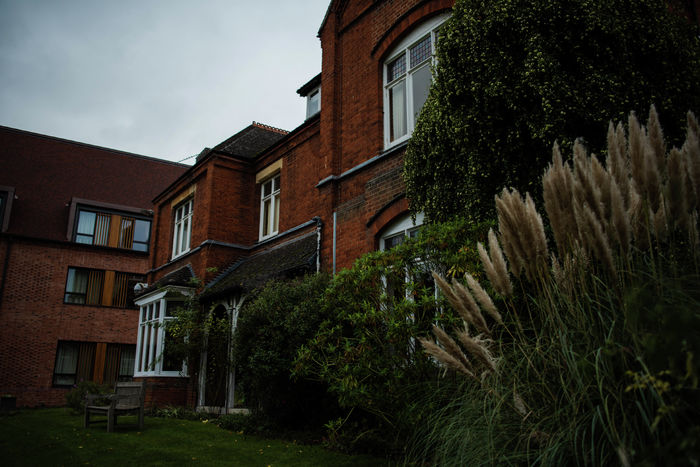John’s spends nearly 1,700% more on student grants than Lucy Cav
St. John’s was able to spend 17 times more than the college with Cambridge’s smallest endowment.

St. John’s College spends over £1,700 more on financial support per student than Lucy Cavendish, Varsity can reveal.
St. John’s was able to spend 17 times more than Lucy Cavendish in the 2022-23 academic year, awarding £1,836,582 total, or £1,832 per student. This compares to Lucy Cavendish’s total award of £86,152, or just £108 per student. These figures only include college-provided grants, bursaries and other financial support.
These figures came directly from the colleges, in response to a series of Freedom of Information requests.
Lucy Cavendish’s is the first, and only, Cambridge College to admit at least 90% of its UK students from state schools. At St. John’s, the equivalent figure is 67%.
Rather than a difference in desire to provide adequate financial support, students believe the difference can likely be attributed to discrepancies in the college’s funding and endowments. Joe Garvey, a Lucy Cavendish student who has been heavily involved in research and advocacy, told Varsity “spending is low because there’s no money, that’s the truth of it.”
Fatima Yusuf, a student at Lucy Cavendish, adds: "The hardship funding available at the college illustrates a systemic failure form the University as Lucy Cavendish just does not have enough money to provide for its students."
Caredig ap Tomos, Cambridge SU Access and Education Officer, commented: “The variation is largely a function of the wealth of the college and its alumni. As an unfortunate product of the current system, working class students at Lucy Cavendish are ultimately disadvantaged compared to their peers because of the college they chose or got assigned.”
Students have been repeatedly told that the Colleges Fund, which exists to help colleges like Lucy Cavendish grow their endowments, cannot be used for operational expenditure such as financial support. This limits the college’s ability to increase funding for financial support.
Lucy Cavendish and St. John’s exist at two ends of the collegiate financial spectrum. In 2022, St. John’s recorded a £3 million surplus, while Lucy Cavendish faces a debt of £16 million. This debt is largely due to a series of loans to finance new student accommodation following the college’s rapid expansion and admission of male and undergraduate students.
Lucy Cavendish students are quick to highlight the positives of the college, and described to Varsity its welcoming environment for students from a state-school background and tight-knit community.
However, Garvey also draws attention to the impact this disparity in funding has on students. “It’s fundamentally a completely different student experience,” he explained, “I have no idea what being a John’s student would be like. The difference in funding means that a lot of us work during term time.”
Yusuf highlights the impossible situation many working class students find themselves in: "Last year I asked for the hardship fund and not only was the process incredibly taxing but my main problem of affording rent was yet to be dealt with. If we're not allowed to work here, how are we meant to survive at Cambridge?"
The discrepancy is also accompanied by delays, preventing students from accessing educational opportunities. An anonymous student told Varsity they were unable to complete an extracurricular course, as they were unable to take the financial risk of not getting reimbursed by the college. They said: “this process is inherently exclusionary and creates barriers to access that do not align with the college’s ambition for widening participation.”
The difference in provision is particularly stark given St. John’s status as Lucy Cavendish’s largest landlord. While St John’s charges students some of the lowest rent in Cambridge, Garvey explains that, at Lucy Cavendish, “almost everyone struggles to pay rent and you don’t get the same level of support for sport, travel or hardship as you would at a richer college."
Some students draw a link between this discrepancy and failures in the collegiate system as a whole. Garvey explained, “When you take this, the difference in rent, the quality of accommodation and the background of students, a wider picture of systemic inequality becomes clear.”
Yusuf highlighted these problems to Varsity: "The problem with the collegiate system is that the University essentially steps out and leaves it to individual colleges. The University needs to push for colleges with larger endowments to donate to smaller colleges."
Caredig ap Tomos is clear that responsibility going forward must rest with the University: “Colleges should not be the focus of proposals to improve financial support, as the largest potential for distributing pooled resources lies with the central University.”
The University, and Lucy Cavendish and St. John’s Colleges were contacted for comment.
 News / Students launch women’s society excluding trans women31 October 2025
News / Students launch women’s society excluding trans women31 October 2025 News / Climate protesters rally against the Careers Service5 November 2025
News / Climate protesters rally against the Careers Service5 November 2025 News / New Christ’s library approved4 November 2025
News / New Christ’s library approved4 November 2025 Theatre / Hitler at the ADC? These guys pull it off5 November 2025
Theatre / Hitler at the ADC? These guys pull it off5 November 2025 News / Students allowed to use AI, says new uni guidance31 October 2025
News / Students allowed to use AI, says new uni guidance31 October 2025









